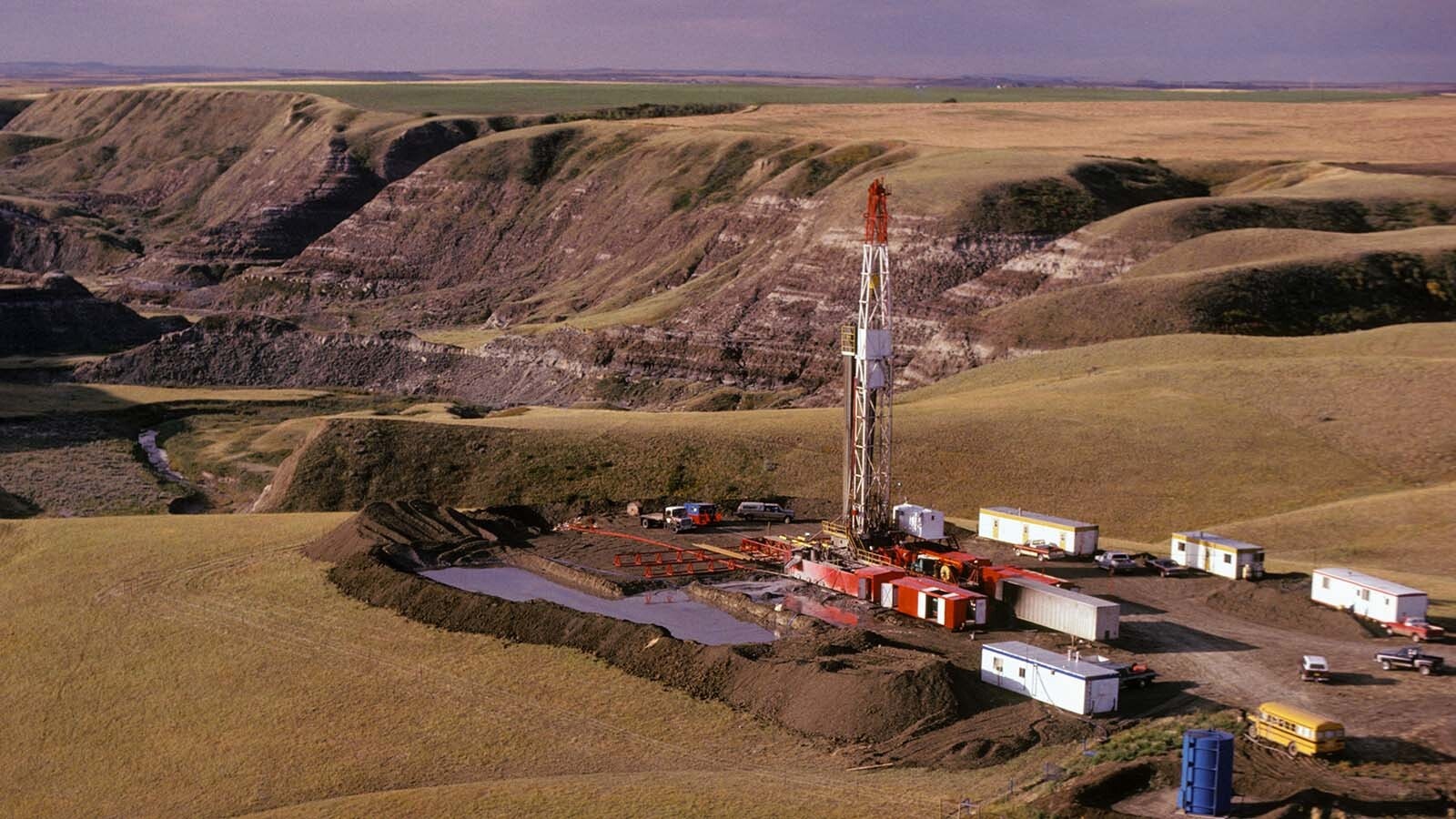The potential takeover of the state House of Representatives by the socially conservative Wyoming Freedom Caucus that was put in motion by Tuesday’s Republican primary isn’t the only major shakeup in the Cowboy State this week.
The energy-rich Powder River Basin is in upheaval.
Coal producers Consol Energy Inc., with headquarters in Pittsburgh, and Arch Resources Inc., the nation’s second largest coal producer with headquarters in St. Louis, said Wednesday they’ve agreed to merge in an all-stock deal valued at about $5 billion.
The companies, which will be renamed Core Natural Resources after the merger, are projecting $110 million to $140 million of annual cost savings from efficiencies gained by the deal within 18 months of the closing, which is expected by early 2025.
In Wyoming, Arch operates the Black Thunder and Coal Creek mines in the northeast part of the state.
In a separate business transaction disclosed late Tuesday, a Houston-based hedge fund disclosed that it bought a 9.96% position in St. Louis-based Peabody Energy Corp., which operates the North Antelope Rochelle, Rawhide and Caballo mines.
The hedge fund, called Thomist Capital Management LP, wants Peabody to use the $1.46 billion in cash on its balance sheet to buy back shares and unlock value in Wyoming’s coal heartland in northeastern Wyoming.
Shares in Arch rose $2.76 to $129.50 on heavy volume of 1.21 million shares in mid-day trading while Peabody’s shares rose 45 cents to $23.01 on heavy volume of 2.4 million shares.
‘Interesting Developments’
With Peabody, Thomist said in a filing with the Securities and Exchange Commission that it wants Peabody to explore other ways to maximize shareholder value, including unlocking value in its Powder River Basin asset and selling down a stake in its Centurion metallurgical coal mine in Australia to free up cash flow for shareholder returns.
Thomist said it plans to engage in dialogue with Peabody’s management and board on the issues.
Peabody spent $80.5 million on buybacks in this year’s first half with $570 million remaining under its stock buyback program as of June 30.
Travis Deti, executive director with the Wyoming Mining Association, couldn’t immediately provide an assessment on the how the Peabody, Consol and Arch deals might impact future operations of the coal companies in the PRB.
“I’m still trying to digest what this means,” Deti told Cowboy State Daily. “I really don’t have much insight at this point other than to say these are certainly interesting developments.”
Deti said that he doesn’t see any immediate reduction in demand requirements for coal by electric utilities despite attempts by the federal government to restrict future sales through new rulemaking with agencies and laws.
“America still needs coal, and Wyoming coal from the Powder River Basin remains critical to meeting our energy needs,” he said.
“The coal industry in Wyoming is clearly challenged by federal regulations and the market,” said Wyoming Gov. Mark Gordon in a Wednesday statement to Cowboy State Daily. “It is not surprising companies are looking for unique financing and other agreements to stay in business.”
Gordon said that his efforts are to preserve jobs and the tax base that the industry provides to Wyoming.
“The coal industry provides jobs and taxes to the people of Wyoming,” he said. “It’s not just about keeping the company going — it’s about protecting the careers of those who are employed and protecting jobs.”
Peabody Sales Falling
While thermal coal use for electricity has been falling in the U.S., demand for metallurgic coal for making steel continues to rise globally.
For sure, the PRB operations of Peabody and Arch have seen a drop in thermal coal production in recent quarters. The region produces about 40% of the thermal coal used by utilities to generate electricity at power plants around the U.S.
On Aug. 1, Peabody Energy lowered its forecast for coal sales out of the PRB by 5 million tons, a sign of further constriction in a market that is struggling to keep its relevance amid a world enamored with alternative energy plays in the wind and solar sectors.
Mines in the Powder River Basin are struggling to regain their footing. Wyoming recently reported a 25% drop in all coal production in the region during the first six months of the year as compared to 2023 levels.
For all of 2024, Peabody now forecasts 75 million to 82 million tons of coal production out of its mines in the basin, 5 million less than what it projected three months ago.
The North Antelope Rochelle Mine, the world’s largest coal mine, reported 12.4 million tons of coal produced in the second quarter, down 4.7% from 13 million tons in the same 2023 period.
The highest volume ever produced during a second quarter at the North Antelope Rochelle mine came in 2014 when it pulled 28.5 million tons out of the ground. That’s 56.5% more than Thursday’s report of 12.4 million tons.
Peabody’s largest haul a decade ago came at time when America was grinding out a return to economic normalcy following the Great Recession back in 2008 and 2009 after a mortgage and financial crisis crippled the nation.
In all of 2014, Peabody’s coal production in Wyoming’s coal stronghold was in line with the most coal that was ever pulled out of the mine on an annualized basis. In that year, nearly 118 million tons was dug up from the North Antelope Rochelle mine.
In the first half of 2024, Peabody dug up 25.8 million tons, 56% less than the 58.4 million tons produced in its 2014 record year.
Peabody’s other mines in the Powder River Basin displayed similar performance in the 2024 second quarter, according to Peabody and Wyoming State Geological Survey data.
The Caballo mine produced 1.7 million tons in the second quarter, down 54% from 3.7 million produced a year ago. It’s nearly the lowest in production out of Caballo since the second quarter of 2014 when it saw 1.67 million tons produced.
Peabody’s Rawhide mine saw production slip 54% to 1.7 million tons in the quarter versus 3.7 million tons in the same year-ago period.
Arch Coal Sales Also Falling
Arch has seen a similar drop in its PRB coal production.
On July 25, Arch Resources, the second largest coal producer in Wyoming, reported that it plans to keep shrinking its “operational footprint” in Wyoming’s energy-rich Powder River Basin. Its end-goal is the "eventual closure" of its Wyoming mines.
Still, Arch expects performance in the northeastern Wyoming coal region to improve in the back end of the year through “cost-cutting initiatives,” language that sometimes can be an indicator of layoffs, which already are beginning to emerge.
Arch reported 53 jobs cut over the past year at its Black Thunder and smaller Coal Creek mines in Wyoming.
At the end of the second quarter, Arch employed 1,011 people at its Black Thunder mine, one of the largest coal mines in the United States, and 41 at its smaller Coal Creek mine, according to the company’s reports to the federal Mine Safety and Health Administration.
The layoffs reflect a dramatic slowdown in production at the PRB mines.
In the 2024 second quarter, production at Black Thunder fell 36.2% to 9.7 million tons of coal mined versus 15.2 million tons in the same quarter last year.
At Coal Creek, production fell 44% to 301,300 tons of coal mined in the 2024 second quarter versus 533,380 tons mined in the same quarter last year.
Since Arch unveiled plans to shut down its Coal Creek mine nearly three years ago, the volume of coal scraped from the surface pit operation has tapered off.
About a year ago, Campbell County commissioners and other local economic development officials began working in earnest with Arch to cushion the blow of closing the mine about 30 miles southeast of Gillette near Wright.
That’s when the idea of turning the site into an industrial park emerged.
After all, the inevitable was coming and local officials couldn’t just sit on their hands facing a grim outlook of the closure of Coal Creek and the eventual closure of Arch’s flagship Black Thunder mine just south of it.
Met Coal Sales Rising
In their merger announcement Wednesday, Arch and Consol said that “new steel” will be essential in supporting the world’s growing population, ongoing economic development, continued urbanization, and the build-out of a low-carbon economy.
The merger will grow North American logistics and export operations aimed at a “growing global customer base,” the companies said.
Core Natural Resources will own two marine export terminals on the U.S. Eastern seaboard, with connections to some ports on the West Coast and Gulf of Mexico.
“The potential to optimize this expanded export capacity and logistics capabilities is expected to enhance reliable, efficient coal delivery to global customers,” the companies said.
Pat Maio can be reached at pat@cowboystatedaily.com.





